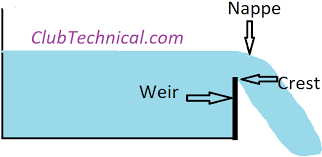Sky Bus Technology
Abstract
The fixed structure at 8 metres height above road level provides the support and guidance for powered bogies which can run at 100 kmph, with the coach shells suspended below, carry passengers in air conditioned comfort, can follow existing road routes, while existing traffic on roads continue. It is aesthetically pleasing and there is no concern of a claustrophobic feeling for road users . Aesthetic, and eco-friendly, the Sky Bus is protected against derailment, toppling or collision - by design as well as by construction, hence is safer than the existing rail based system.
At the cost of Rs. 50 Crore per km. in India , the system is noise - free and pollution - free with a capacity to transport 36000 passengers per hour (pph), scalable to 72,000 pph as required. With no signaling and having no points and crossings, it is a unique mass-transit system that can be put up within two years in any crowded & congested city. In addition to moving people, the Sky Bus system can carry standard 20 ft. containers, boosting its capacity utilization to double that of other existing systems.
The main components of the sky bus system are described below:
Sky way
i. The sky way consists of a concrete box structure 8.4 X 2.4 m. carried over a series of piers at a height of 9 - 10 m. above the existing road level.
ii. In the middle of the roadway, pile foundations support 1 m. diameter columns approximately 8 m. high, and at a spacing of 15 m. all along the roadway.i
iii. It has two heavy 52 - 60 kg. / Metre rails fixed with appropriate fastenings within the concrete box support at standard gauge that guide the sky bogie.
iv. There are no points & crossings.
Sky Bogie
i. Standard two axle bogies can be used in metros for speeds of 100 kmph (but can have higher speeds if required, upto 160 kmph) of standard gauge.
ii. Linear Induction motor technology is incorporated with 4 th rail driving, which is above the bogie and 3 phase AC motors with regenerative power capability are used.
iii. Third Rail is used for current collection.
iv. Braking - Since the bogie is mounted, 3 levels of braking namely - Regenerative, disc brakes and finally, Emergency mechanical brakes are provide to ensure the safety of commuters.
Sky Coaches
These are double walled light shells with large wide windows suspended from the sky bogies.
Controlled banking on curves is possible. Curves with radii of 50 m. can be negotiated.
The coaches are air conditioned and fixed with automatic doors.
They have audio visual information to assist the passengers.
They also have special 4 m. wide sliding doors for quick entry and exit of passengers.
Each pair of coaches carries 300 persons and service every one minute or 30 seconds is possible.
Sky Stations
Unlike conventional mass transit systems, Sky Bus needs smaller stations about 50 mt. long.
Stations are available at every 1 km. It is a natural footbridge across the road. From up line to down line the station provides natural access, which is easy.
Service is available at every 30 seconds or 1 minute, which means virtually no waiting time for passengers.
Totally automated without drivers, access control is electronic by prepaid cards being swiped in.
Stations act only as an access facility, and not as passenger holding area.
.jpeg)
.jpeg)



Comments
Post a Comment